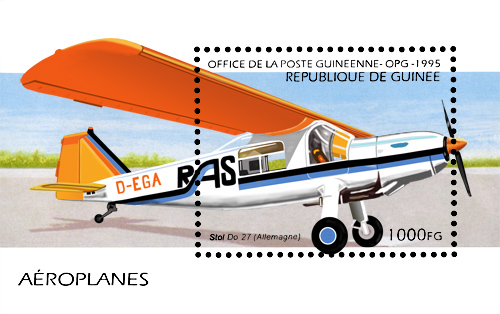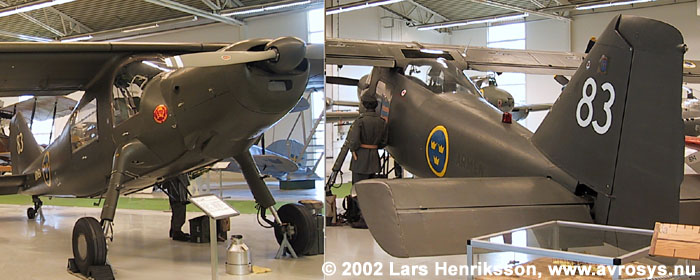|
|
||
| FPL 53 - Dornier Do 27A-4 (1962-1991) | ||
| Page 1(1) | ||
|
|
||
 |
||
|
The
Dornier 27 was a development of an earlier design - the Do 25 - built by
the Spanish aircraft manufacturer CASA to the design by Officinas
Technicas Dornier. The Dornier 27 prototype, with the Spanish
registration EC-AKY, was flown for the first time in the summer of 1955
at Madrid. The aircraft for the German defence -
which had placed a large order of the type - were however built
at Oberpfaffenhofen in Germany and the initial production aircraft was
flown there in October 1956. The Do served in all three branches of the
German defence - Luftwaffe, Marine & Heer -with
totally 428 aircraft, and was also put into production to meet
orders from the civil market. The last military example for Germany was
delivered in 1960.
In
the beginning of the 1960s, the Swedish Army aviation was still a small
organization, flying the old Piper Super Cub and a few helicopters. None
of these types could hardly be used for the transport of cargo.
Therefore, the Army decided to procure a larger aircraft type. In
addition to better cargo capacity, the aircraft also would have a higher
cruising speed and better range than the Fpl 51 Super Cub. Good STOL
(Short-Take-Off-and-Landing) capability was also a requirement. The
aircraft had to be able to operate from temporary airstrips as well as
ordinary gravelled roads. The
Dornier 27 fulfilled these demands. In 1961, five aircraft were ordered
and were delivered the next year. The Swedish Do 27s, which were given
the military designation Fpl 53,
were designated Do 27-A-4 by the manufacturer. This referred to some
discrepancies from their
standard design. The landing gear was reinforced and the aircraft
had a hatch in the cabin floor to make it possible to drop cargo during
flight. The engine was a Lycoming G0-480-B1A6, delivering 274 hp. In
wintertime, skis could be fitted at the landing gear. The
aircraft had a spacious cabin. In addition to the two pilots, four
passengers could be carried. The passenger space was often used for
observers at reconnaissance missions. The large windows gave an
excellent view and there was plenty of room for large maps in the cabin.
As an alternative, two stretchers could be accommodated behind
the pilots. When using the aircraft for cargo, 700 kg could be carried.
The paratroopers at Karlsborg were frequently users of the Fpl 53, which
was a cheaper alternative than larger transport aircraft such as the Tp
79 DC-3 or the Tp 84 Hercules. Another
important task was the training of the Army’s pilots in instrument
flying.
Three
of the five Fpl
53, # 53272, 53274 and 53275, were destroyed at
accidents. In the last one the very experienced pilot, Captain Åke
Carlsson, lost his life. The two remaining aircraft, # 53271 and 53273
are preserved for the future. The photos show # 53273 (c/n 2110),
exhibited at Flygvapenmuseum. Length:
9,60 m. Span: 12,00 m. MTOW: 1.850 kg. Max. speed: 247 km/h.
|
||
|
For the Model Builder Revell has a plastic model kit of Swedish Army FPL 53 Dornier Do 27 in scale 1:32. Catalouge number 4726. Click on the thumbnail for larger image. |
||
 |
||
| Stamp sheet from Republic of Guinea 1995 depicting Dornier Do 27 | ||
 |
||
|
|
||
|
|
||
|
|
||
|
© Lars Henriksson |
|
Updated 2010-07-14 |
